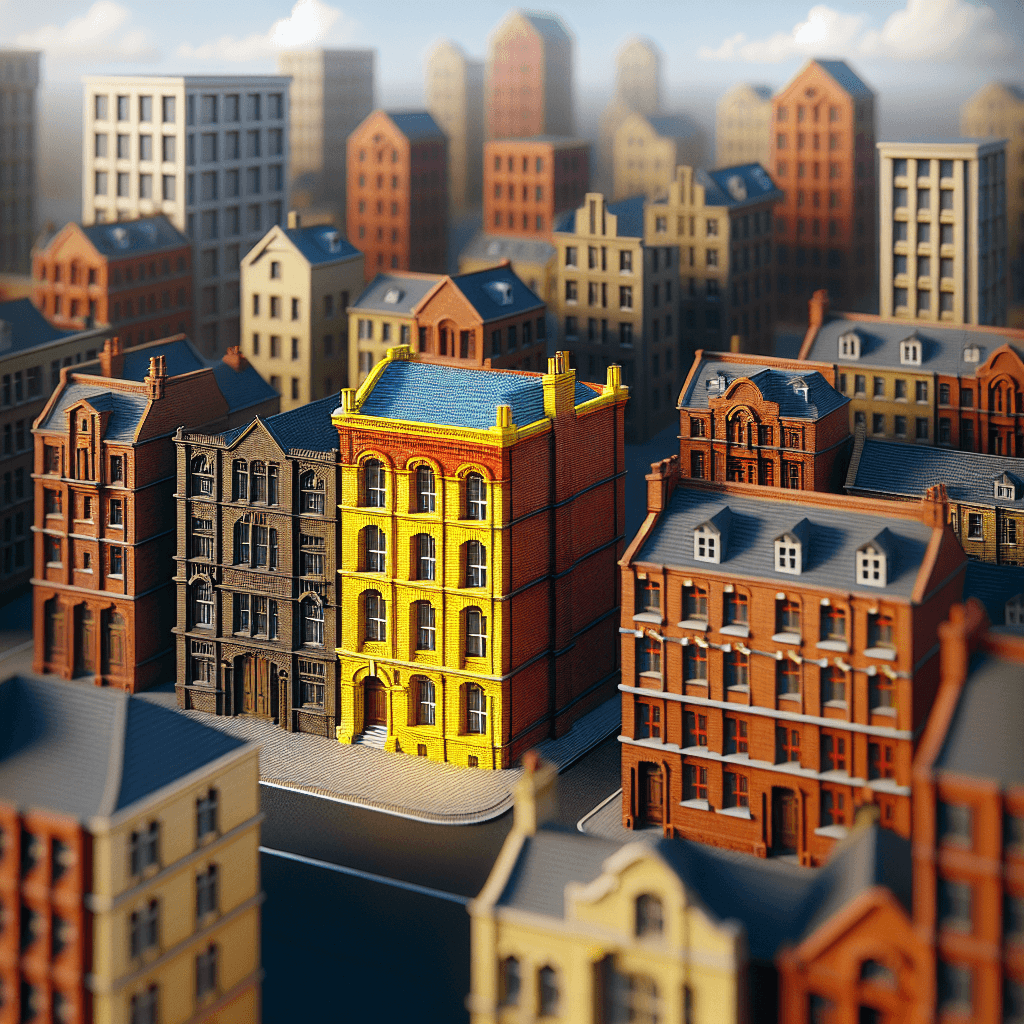Why is there sometimes one random, differently colored brick on a building
That single, out-of-place brick isn't a mistake, but a deliberate mark steeped in centuries of folklore, superstition, and secret tradition.


Too Long; Didn't Read
TLDR: It is usually a repair with a replacement brick that does not perfectly match the original batch. Less often, it is an intentional design choice, a manufacturing fluke, or a builder's superstition.
Blog Post Title: From Superstition to Signature: The Real Reasons Why There Is Sometimes One Random, Differently Colored Brick on a Building
Introduction
Have you ever walked past a brick building and found your eyes drawn to a single, solitary brick that doesn’t match the others? It sits there, a different shade of red, a slightly darker brown, or even a pale yellow, breaking the uniform pattern of the wall. It’s easy to dismiss this as a simple mistake—a careless error made by a long-gone builder. However, that one random brick is rarely an accident. In fact, it often tells a fascinating story about the building’s history, the beliefs of its creators, or the practical realities of construction. This blog post will uncover the various intriguing explanations behind this common architectural quirk, transforming what you might see as a flaw into a deliberate detail with a hidden purpose.
The Practical Explanation: A Story of Repair and Replacement
The most common and straightforward reason for a mismatched brick is simply maintenance. Buildings, like everything else, age and suffer from wear and tear. A brick can become cracked due to shifting foundations, damaged by impact, or eroded by decades of harsh weather. When this happens, a mason is called in to replace the damaged brick.
The challenge, however, is finding a perfect match. Sourcing an identical brick for an older building can be nearly impossible for several reasons:
- Clay Source: The original clay pit from which the bricks were made may have been exhausted or closed down. Different clay sources have unique mineral compositions, resulting in different colors after firing.
- Firing Techniques: Over the decades, kiln technology has changed dramatically. The temperature, firing duration, and type of fuel used all have a significant impact on the final color and texture of a brick.
- Weathering: Even if a mason found a brick from the original batch, it wouldn't match. The bricks on the building have been exposed to sun, rain, and pollution for years, causing their color to fade and alter. A new brick will look starkly different until it has had decades to weather.
In these cases, the mason’s goal is to find the closest possible match. The resulting differently colored brick is not a sign of poor workmanship but a testament to the building's ongoing care and history.
The Mason's Signature: A Mark of Craftsmanship
In a less common but historically significant tradition, a single different brick can serve as a “mason’s mark” or a signature. Much like an artist signs a painting, some master masons would intentionally place a unique brick in a discreet location to identify their work. This could be a brick from a different batch, one with a unique stamp, or even one placed in a different orientation. It was a subtle act of pride and a way to leave a permanent, personal touch on the structure they helped create. While this practice is less prevalent today, it adds a layer of human story to the historic buildings that bear these marks.
The “Spirit Brick”: A Tradition of Superstition and Humility
Perhaps the most fascinating explanation is rooted in folklore and superstition. In various cultures throughout history, there was a belief that achieving perfection could attract the envy of the gods, or worse, evil spirits. A flawless creation was seen as an act of hubris, challenging the divine.
To ward off this unwanted attention, builders would intentionally introduce a flaw into their work. This deliberate imperfection, known as a “spirit brick” or sometimes a “devil’s brick,” was meant to signal humility and protect the building and its inhabitants from harm. This concept isn't unique to bricklaying; it can be found in other crafts, such as the “spirit line” in Navajo weaving or the intentional mistake in an Amish quilt. The mismatched brick served as a declaration that only a higher power could create something truly perfect.
Intentional Architectural and Artistic Choices
Finally, a differently colored brick can be a purely intentional design choice made by a modern architect or designer. In contemporary architecture, what might seem random is often meticulously planned. A single, contrasting brick can be used to:
- Create a focal point: Drawing the eye to a specific part of the facade.
- Break up monotony: Adding visual interest to a large, uniform wall.
- Serve as a marker: Indicating the location of a cornerstone, a time capsule, or the level of a historic flood.
- Incorporate history: Sometimes, a brick from a demolished historic building is included in a new structure as a “memory brick,” linking the past to the present.
In these instances, the brick is a calculated element of the building's aesthetic identity.
Conclusion
So, the next time you spot that one random, differently colored brick on a building, take a moment to consider its story. It is almost never a mistake. It might be a practical patch, a silent signature of a proud craftsman, a humble nod to an ancient superstition, or a clever stroke of an architect’s pen. This single, seemingly out-of-place element is a reminder that our built environment is layered with history, purpose, and countless hidden details. It’s an invitation to look closer and appreciate that even in a wall of a thousand bricks, one can have a special story to tell.


